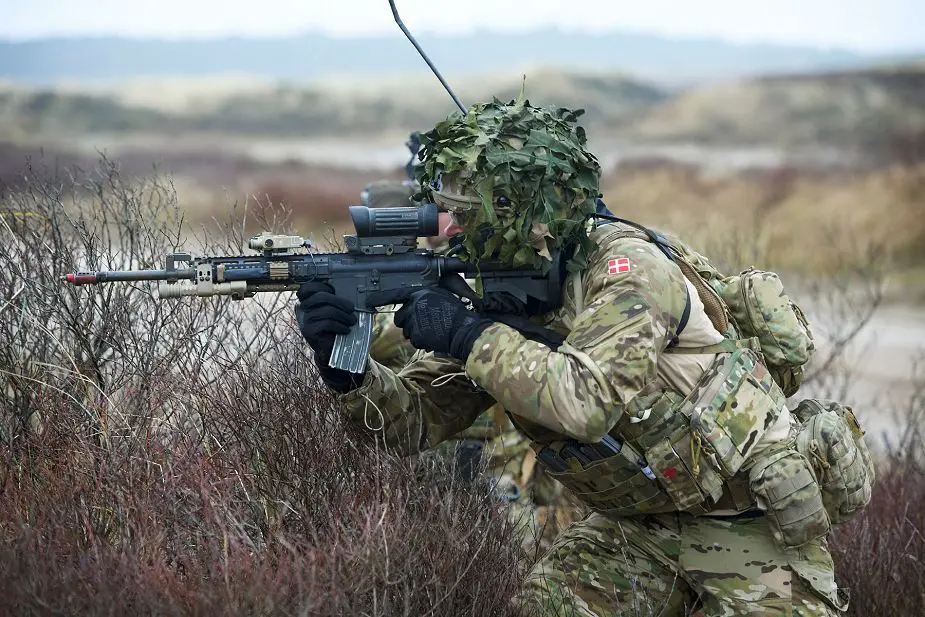Breaking news
Denmark will increase its defense budget by 20 percent from 2018-2023.
The Danish government (‘Venstre’ (the Liberal Party), the Liberal Alliance and the Conservatives) and the Social Democrats, the Danish People’s Party and the Social-Liberal Party have reached the agreement regarding the Danish Defence for the period 2018-2023. In view of the new security political situation, the Parties agree to increase the annual Danish defence budget by DKK 800 million (€108 million) from 2018 with an increased trend to DKK 4.8 billion (€644 million) by 2023.

Danish soldier at military training (Picture source Military Images website)
The new Defence Agreement for 2018 – 2023 represents a substantial investment in Defence to protect and defend Denmark. The substantial increase will bring the Danish Defence annual budget to a level that is 20 percent higher than today. At the same time, significant equipment investments over the agreement period demonstrate that Denmark aims to live up to NATO's guideline of investing 20 percent of the defence budget on new equipment.
The Agreement will strengthen Danish Defence contributions to NATO’s collective deterrence, improve capacity to contribute to international operations, enhance Defence contributions to national security and increase cyber defence as well as the national emergency preparedness.
“The Agreement demonstrates our resolve and determination to protect and defend a safe and secure Denmark as well as maintaining our position as a core ally to NATO. The strengthening of Defence is necessary in the light of the deteriorated security political situation. Today’s Agreement delivers a strengthened Danish Defence – with more troops and better equipment – and an enhanced national preparedness.
The Parties agree on a six year framework agreement that will set the course for the future direction and development of Defence and National Emergency Preparedness.
Based on Army's current operational capabilities, work will be undertaken to build a deployable brigade which can contribute to deter a more equal opponent and take part in collective defence under a NATO framework. The brigade will strengthen the Armed Forces' overall fighting power and mobility and will enhance the ability to operate in a NATO context.
A light infantry battalion will be established (with up to about 500 troops). The battalion can be deployed by air or ship and may be part of collective defence, some international operations or nationally, including in support of the police. The light infantry battalion will consist of HQ staff, HQ Company and three standing light infantry companies equipped with mortars and antitank weapons to counter armoured vehicles.
The Special Operations Command will be reorganised to accommodate for an enhanced operational capacity. In addition, investments in more operators for both the Jaeger Corps and the Frogman Corps will be carried out. In the agreement period 2018 - 2023, the number of special operation patrol units will be increased by more than 50 percent. It is the ambition to further double the number of special operations patrol units compared to today’s level in the next Defence Agreement.


























